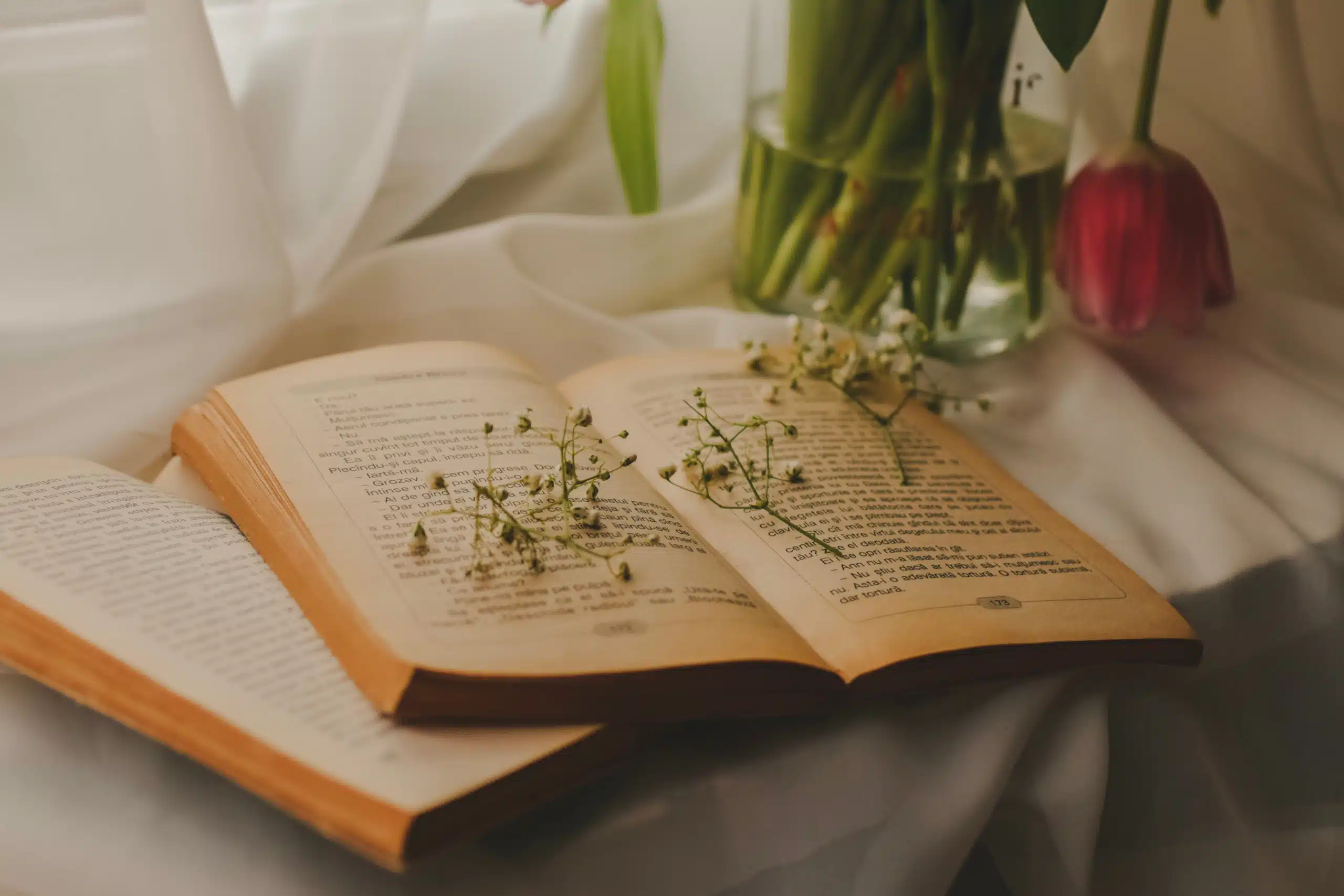Here’s what the Patchwork poetry form is:
A patchwork poem is a form of found poetry made of lines taken from different sources, and when assembled together they create an entirely new poem.
Patchwork and cento are actually words used interchangeably when referring to this poem type.
It’s just that patchwork poetry is essentially seen as the “modern” version.
So if you want to learn all about the Patchwork poetry type, then you’ve come to the right place.
Let’s jump right into it!
- Epyllion Poetry Form: Sculpt Grand Tales
- Mimic Poetry Form: Unleash Your Inner Wordsmith
- Epithalamion Poetry Form: Ignite Love’s Triumph
- Anagrammatic Poetry Form: Puzzle Your Thoughts
- Cento Poetry Form: Inspire With Melodic Blend

Forms of Poetry: Patchwork Poems

First, it should be noted that the terms “patchwork poem” and “cento” are almost or completely interchangeable, depending on who you ask.
This article will be specifically focused on the modern era of the form, but some nods to a more traditional model of the cento will be mentioned in passing.
In short, a patchwork poem is a type of found poetry in which the lines each come from different pre-established works that the poet borrowed from.
There will also be a brief section on how to approach a patchwork poem in terms of ethics and copyright law, so be sure to stick around for that.
Basic Properties of a Patchwork Poem

| Rhyme Structure | Rare |
| Meter | Depends on sources |
| Origin | Ancient Greece and Rome |
| Popularity | Uncommon; usually not published professionally |
| Theme | Varies |
How Are Patchwork Poems Structured?

Patchwork poems have a few different executions.
The most common structure simply involves borrowing one line from each piece of source material to create something new and unique.
So you might have one line by Robert Frost, followed by one line from Rupi Kaur, followed by one line from William Shakespeare, followed by one line from William Carlos Williams, and so on and so forth.
Immediately, observant readers might notice a problem with the above statement.
Wouldn’t borrowing lines from famous poets technically be plagiarism?
We will go into a full exploration of that question in a later section, but the short answer is: It depends on how you go about it.
Patchwork poems are generally better as a hobby than as a commercial product because of the legal and ethical complications of using someone else’s words.
Putting that topic aside for now, patchwork poems are an interesting exercise for students, writing workshops, and personal practice, in that they force you to create the best poem you can within foreign limitations.

The style, meter, and rhyme scheme of the poem will almost certainly be incongruent, and it’s up to the poet to determine how to best mix and match disparate voices around one topic or theme.
It should be noted that the word patchwork poem is often used interchangeably with the term ‘cento.’
The cento is a much older form that the modern patchwork poem.
Since the classical standards proposed by ancient scholars like Ausonius are more or less defunct, it’s safe to treat the terms as interchangeable in casual use.
As a quick reference point, historical models of the cento treated it as a form that borrowed almost exclusively from classical poets like Homer, Ovid, and Virgil.
Ausonius posited a model of the cento in which borrowed sections would range from half a line to one and a half lines.
This has gradually been streamlined across the centuries and today’s patchwork poems are instead seen as the poetic equivalent of collage art.
It is typically borrowing one full line at a time and from any sources that the poet might feel are appropriate.
The overall spirit of the patchwork poem hasn’t shifted much from its original roots; however, making the divide between the forms, if any, is fairly trivial in the grand scheme of things.
History of Patchwork Poems

While the concept of ‘borrowed words’ has most likely been around much longer than the traditional cento, it is nonetheless around the 3rd or 4th century that the ancient precursor to today’s patchwork poems is first documented.
Ausonius was the first to formally define a cento, in the 4th century.
It should be noted that he did not explicitly argue that centos should only borrow from classical sources, however (as they would have still been contemporary poets in his time).
This tradition was likely born strictly out of imitation, as poet after poet simply pulled from the sources that they associated with centos based on the examples they had seen before them.
It is difficult to find the exact moment that the term cento started to fade out in favor of the more immediately recognizable phrase “patchwork poem.”
With such a simple concept, it’s entirely possible that the first person to call their work a patchwork poem didn’t even know that there was already a similar term in poetry.
In any case, the concept of taking lines from established works and recombining them into something new has reentered the poetic community over the last century.
Hence it is now a common classroom exercise as it’s an excellent way to introduce students of all ages to the literature and encourage them to interact with it on a deeper level.
Example of a Patchwork Poem

Some say the world will end in fire,
in a kingdom by the sea.
Rage, rage, against the dying of the light.
Their very memory is fair and bright.
The above patchwork poem borrows its first line from Robert Frost’s Fire and Ice, the second line from Edgar Allan Poe’s Annabel Lee, the third from Dylan Thomas’ Do not go gentle into that good night, and the fourth from They are all Gone into the World of Light by Henry Vaughan.
This combination of poems lends itself to a unique feeling of dread or unease, in that all four poems deal with death or loss in some profound way.
These are some of the more iconic lines from those poems, making it likely that readers well-versed in poetry will pick up on the implications right away.
This utilization of well-known lines to establish a motif or mood is one of the key strengths of a patchwork poem.
This particular poem does go out of its way to establish a set of end rhymes on the third and fourth lines, but this is entirely unnecessary and was only done for impact.
A closer inspection will also reveal that the lines do not have a consistent meter, despite some of the lines specifically being metered.
This is fairly typical of a patchwork poem since the goal is a feeling or a meaning, rather than a stylistic consistency.
Tips for Writing a Patchwork Poem

Choose a topic or style of poetry that you know inside and out.
If you’ve spent a lot of time in your life reading famous poetry, then it will be much easier to put together a patchwork poem since you will have a larger pool of titles off the top of your head to reference.
If working from scratch, then one easy approach is to decide on the theme and go from there.
Simply looking online for things like “poems about death” or “romance poems” will make it easy for you to pin down the poems that will most likely have images or thoughts that appeal to your specific topic.
It is not advised to try to paint a scene, though you certainly could.
Trying to build a comprehensible series of events out of an assortment of lines will be incredibly difficult, so it’s generally better to go for something vague.
A feeling you wish to express.
A visual motif to center the poem around.
A general theme.
However you wish to approach a patchwork poem, we need to go address the elephant in the room first.
It would not be wise to seek commercial compensation for a patchwork poem in most scenarios.
Citing every source, getting written permission from contemporary writers you borrow from, and checking to make sure you know which lines are and are not currently in the public domain is certainly an option.
But generally, patchwork poems will not sell well enough to justify jumping through all these hoops in the first place.
As mentioned elsewhere in the article, patchwork poems are a great chance to interact with your favorite literature on a deeper level and improve your own writing skills by conceptualizing different ways to arrange and rearrange lines.
However, they should generally be considered a hobby rather than a career.
Poet’s Note

I couldn’t find a definitive source to confirm whether patchwork poems were directly inspired by the old Cento form or if a more modern poet just happened to have the same idea.
Neither would surprise me.
Comprehensive Collection of Poetry Forms: Craft Words Into Art

Dare to traverse the entire spectrum of poetic forms, from the commonplace to the extraordinary?
Venture from the quintessential Sonnet to the elusive Mistress Bradstreet stanza, right through to the daunting complexity of Cro Cumaisc Etir Casbairdni Ocus Lethrannaigecht.
For those with a zeal to encounter the full breadth of poetry’s forms, this invitation is yours.
Start exploring the vast universe of poetic ingenuity with our comprehensive array of poetry forms right now!
